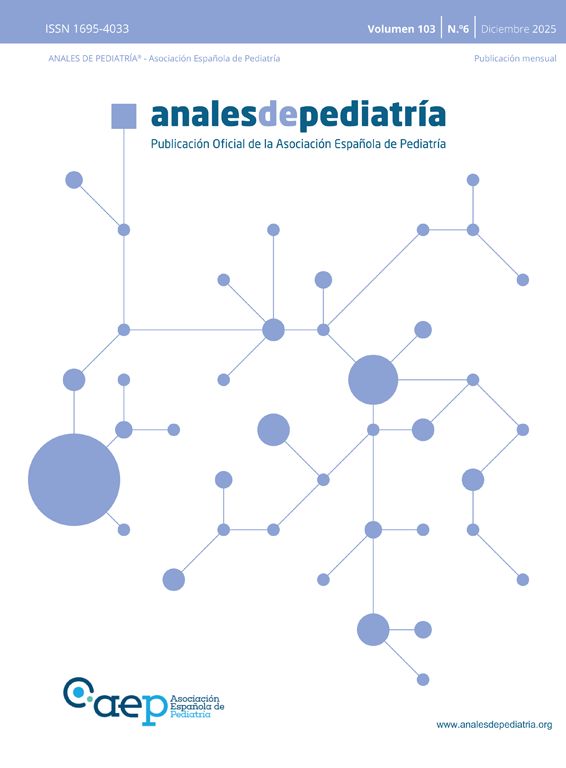We present the case of a male term neonate delivered by caesarean section without complications that was born with mottled cutaneous lesions with an extensive and asymmetrical distribution. The highlights of the physical examination were the presence of blue–red spots of varying intensity and a net-like pattern in both lower extremities, the upper extremity and hypochondrium and the lumbosacral region (Fig. 1). There was no mucosal involvement, anthropometric abnormalities or any additional anomalies. The complete blood count and the coagulation panel were normal.
After being diagnosed with cutis marmorata telangiectatica congenita, the patient underwent an evaluation to rule out extracutaneous anomalies that did not identify any visceral, cardiovascular, ophthalmological or central nervous system anomalies. The patient remained asymptomatic and was discharged at 72h under outpatient follow-up. At 4 months, there lesions had partially resolved (Fig. 2). A very small asymmetry in the diameter of the lower extremities was detected, with no differences in length. The psychomotor development to date has been normal, and the patient has not exhibited any neurologic symptoms.
Cutis marmorata telangiectatica congenita is a rare congenital vascular anomaly of unknown aetiology characterised by the presence of reticulated patches of skin with a marbled appearance that blanch with pressure and get exacerbated with cold temperatures and stress. The most frequent localization is the lower extremities, and the distribution is mostly asymmetrical. It may be associated to other cutaneous and extracutaneous anomalies, most of them mild.1 It is essentially a clinical diagnosis, and the differential diagnosis must include other cutaneous anomalies with a reticulated appearance. There is no specific treatment for it. The outcome is usually favourable, in some cases with full resolution of the lesions.1–3







